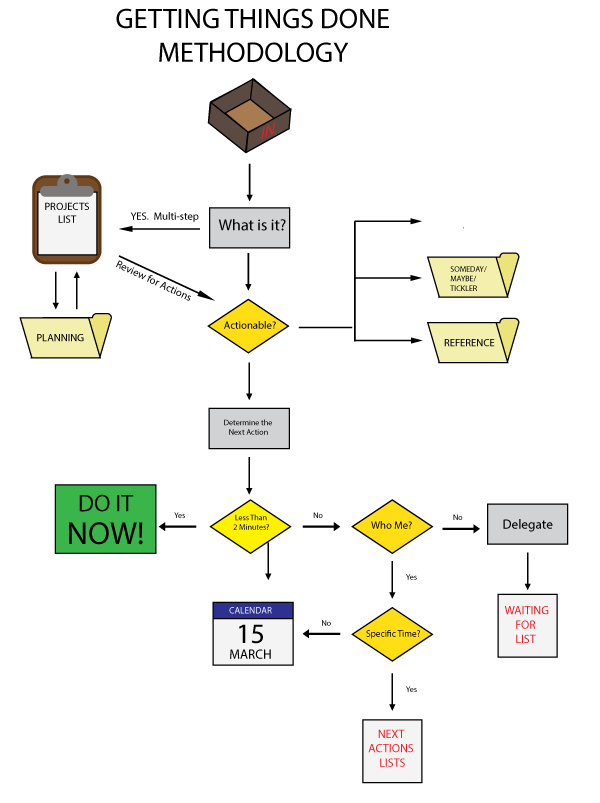Author: David Allen
Format: Audible / Kindle
Narrated By: David Allen
Subject: Productivity
Rating: 8/10
Summary:
Getting Things Done has transformed the way I conduct my life, which really says a lot. The book itself describes a system for dealing with the immense variety of activities, commitments, and projects we each struggle to juggle in our daily lives. The system is built around 5 key steps: Capturing, Clarifying, Organizing, Reflecting, and Engaging. The purpose of the system is to get all of your obligations out of your mind and into a known centralized location in the form of lists, which should allow you to have a “mind like water,” and more capable of being in the moment. It should also allow you to have the ability to spend your time working on the activities that you can possibly complete in any given situation. This system is a lot like Chess in the fact that it takes a moment to learn, and a lifetime to master.
In the three or so weeks since I started reading the book I have made the following progress:
- My Physical In Box at work is habitually empty (this doesn’t mean I have completed all of the work and don’t have any pending action items.)
- My Email In-Box is also habitually empty (see above.)
- I have adopted contextual list-taking as a way of life.
- Actively adopting checklist for repetitive activities in my life.
- I have noticed an uptick in my productivity and less loose-ends across the full spectrum that is my life.
- My mind wanders less when I am in meetings and having conversations.
That last bullet point is a substantial benefit. Having said that, I found my mind constantly wandering to projects, ideas, and activities as I worked my way through the book because I found it very difficult to digest the information without trying to apply it to my life. So that was a bit of a viscous cycle. I will definitely keep a copy of this book for reference.
What I liked Most About the Book: Seeing my empty In-Box, and the focus on defining the “Next Action.”
What I liked Least About the Book: The information tends to become more and more repetitive as you read through the book. All in all, Getting Things Done book reads much like a textbook which to be fair, it pretty much is.



